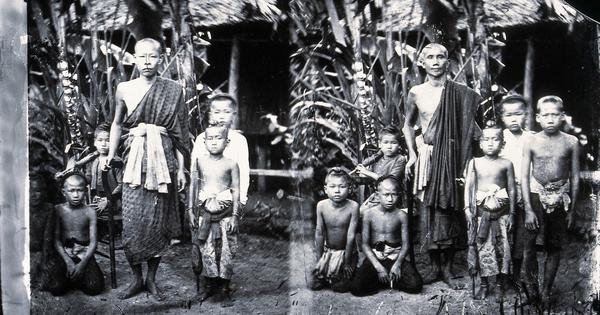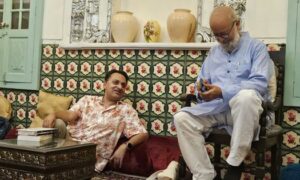
When the Japanese Empire invaded Thailand in December 1941, forcing the kingdom into an uneasy alliance with Tokyo, Thai citizens living in India suddenly found themselves caught in an uncertain limbo. Overnight, they went from peaceful neutrality to the precarious status of enemy subjects.
This shift stemmed from the Enemy Foreigners Order of 1939, a wartime decree that empowered colonial officials to intern, register and control those deemed enemy foreigners. While citizens of Axis powers like Germany and Italy had been immediately targeted in 1939, Thais in India had so far been spared thanks to Thailand’s initial neutrality. However, once Japan invaded and Thailand declared war on Britain – and by extension, India – in January 1942, these protections evaporated, placing Thai nationals under the watchful eye of the colonial regime.
In February 1942, the Home Department ordered the identification of all Thai citizens across British India and the princely states to assess their potential threat. “On outbreak (of) war with Siam, please take same action as against Japanese subjects…subject to the modification that the male internees, and females, if any, should be sent directly to the Internment Camp, New Delhi and not to local Internment Camps or parole centres,” the Home Department secretary wrote in a letter to local governments across India.
Unlike Japan, which had well-established trade links and business communities in cities like Bombay, Thailand had only a handful of nationals in India. Even their numbers were disputed, particularly since descendants of 17th-century migrants in Assam were still seen as Thais despite having little connection with the kingdom.
Among those identified as Thais outside Assam, only a few were of non-Indian origin. One such person was a 36‑year‑old Muslim nurse named Urom Manbin in Bombay. “Her father died during her childhood, and her mother and sister are still resident in Thailand,” Bombay Police Commissioner WRG Smith wrote in a letter to the Home Department. Employed as a nurse by a British Indian family in Bangkok, she had accompanied them to Bombay in 1941. Smith saw no reason to send her to an internment camp.
State service
Smith’s letter also mentioned Bamanji Dossabhoy Gazdar, a 64-year-old Thai citizen of Parsi origin who was born in Bombay. In 1898, Gazdar had moved to Bangkok at his employer’s request to expand their clothing business, but the business failed within six months and Gazdar ended up working for the Siam State Railway.
“He retired from this service in February 1933 holding the rank of District Traffic Superintendent, Goods Control,” Smith wrote. Granted a monthly pension of 340 Ticals, approximately Rs 415, he returned to Bombay in 1935 after becoming a Siamese citizen in 1921 to qualify for retirement benefits abroad.
Married in India, Gazdar and his Parsi wife had five children in Thailand. Three daughters returned to India with them, while their two sons stayed back. Gazdar’s pension payments stopped abruptly in 1941, and facing rising costs in Bombay, he sought permission to move to Igatpuri. While Smith did not recommend internment, he did have reservations about Gazdar moving to the hill station.
“In view…of Mr. Gazdar’s close connection with the Thai Government and the fact that his two sons, who are natural born Thai subjects, are in State service there, [the] Government may consider the desirability of directing him to take up residence outside Bombay and other places of strategical importance to India,” Smith wrote.
In any event, the authorities ultimately allowed Gazdar’s move to Igatpuri.
Constant watch
Gazdar was not the only Parsi in Bombay Province with Thai citizenship. PA Pestonjee Desai, who took the name Vimolraks Luang Samitt, returned to Poona from Bangkok after retiring from the Siam State Railway. Like Gazdar, he had become a Thai subject for pension purposes. Also like Gazdar, his pension payments were halted in 1941, just before Japan’s invasion of Thailand.
Desai’s two sons and one daughter were born in Bangkok, but he made sure to register their births with the British diplomatic mission to ensure they were Indian citizens. The children grew up in India, with the sons going on to work for Indian companies and the daughter marrying a tax official.
“Mr. Vimolraks Luang Samitt @ P. A. Pestonjee Desai has no interests in Siam and has not come to adverse notice during his long stay in Poona,” the city superintendent of police wrote to the Home Department.
The authorities in Bombay decided to merely keep the two Parsi men and the Thai Muslim woman under surveillance without restricting their movements. Any mail they received from or sent to Thailand was opened by censors.
The authorities were also lenient towards Chaudhry Abdul Aziz, a 62-year-old resident of Batala in Punjab, who had become a naturalised Thai subject before his retirement. “The Superintendent of Police, Gurdaspur, is satisfied that he is perfectly loyal to the British Government and recommends that he should not be interned,” the Punjab chief secretary told the Home Department.
Arabic student
Not every Thai resident in India received such treatment. Nai Ismail Bin, also known as Nai Ismail Ahmed, was arrested from Lucknow and sent to the New Delhi camp.
“He is a Malayan Siamese (Thailander) and the son of Ahmed,” the home secretary of the United Provinces wrote in a note on February 19, 1942. “He was born in Bor Plub Mohalla of Songhkhla in Thailand in the year 1915.”
Nai Ismail came to India in 1940 to study advanced Arabic along with the Quran and Hadiths after spending a few years in an Islamic seminary in Penang.
“He is a pauper and was living with Agha Altaf Hussain, a Moradabad Zamindar who gave him food and shelter,” the United Provinces home secretary wrote. “On the declaration of war with Thailand, he was arrested and sent to Internment Camp at Delhi. Only religious books were recovered during his house search.”
The report did not provide a reason why the student was seen as a risk, but this was not unusual. Wartime ordinances gave the colonial authorities the power to arrest “enemy subjects” without reasonable justification. The same fate as Nai Ismail befell three people in Bengal, including a monk named Bhikku Sod Singhaseny. They were arrested and interned without explanation.
Recruitment drive
In Assam, Chief Secretary HG Dennehy reported two ethnic Thais who “may have been resident in Assam for many generations”. Although not registered as foreigners, Dennehy doubted their allegiance to India “owing to claims that ties exist between Thailand and the Ahoms of Assam” and decided to closely monitor them.
When the Home Department asked for details, Dennehy said their names were Ang Thai Siam and Khetcha Thai Siam, adding that they were not the only Thais in Assam. “These men are the descendants, in the seventh generation of persons who left Siam long ago,” he wrote. “There are some 40 others of similar descent in the Sibsagar district. In the opinion of this Government it is better while maintaining an unobtrusive watch on them, to leave these people undisturbed and avoid arousing feelings (if any) for their place of origin.”
Dennehy followed this up with another letter naming four more people who were descendants of Thais who migrated to Assam 300 years earlier. “They are popularly known as Siam Gohain or Burmese and profess the Buddhist religion,” he wrote. “There is nothing political known against any of them.”
Records reveal that British authorities sought to recruit Thai refugees for radio broadcasts to South East Asia, including speakers of Patani Malay from southern Thailand, to reach territories occupied by Japan.
The internment and surveillance of Thais in India lasted until the end of World War II, when Japan’s surrender dissolved the Thai‑Japanese alliance. In 1946, Thailand signed a peace treaty with India and Britain, paving the way for renewed friendship between the kingdom and both nations.
Ajay Kamalakaran is a writer, primarily based in Mumbai. His Twitter handle is @ajaykamalakaran.
📰 Crime Today News is proudly sponsored by DRYFRUIT & CO – A Brand by eFabby Global LLC
Design & Developed by Yes Mom Hosting






